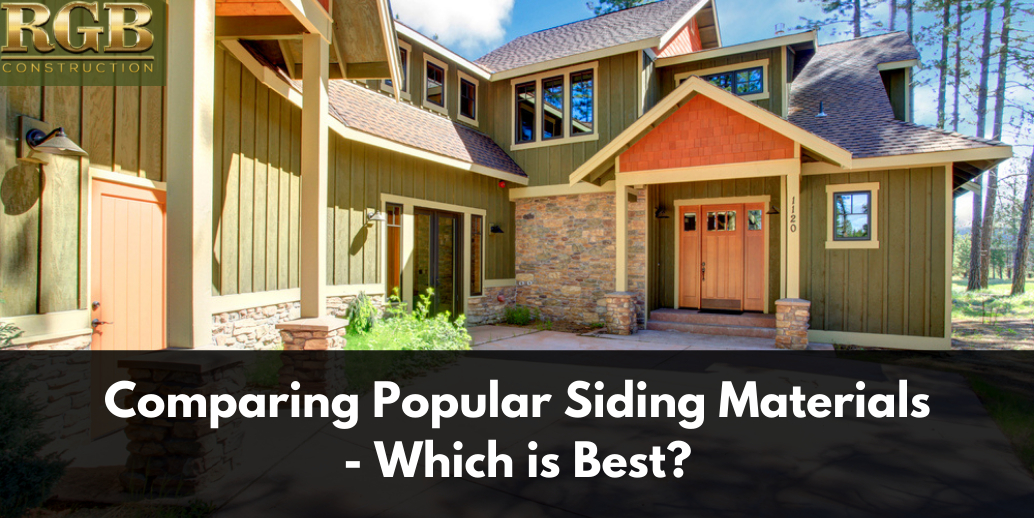If you are ready to replace your home’s siding, several options are on the market. The exterior of your home is the first element people see from the street. Poor-looking siding can bring down the curb appeal of your property. There are many popular siding options, but which one is the best for your home? Let’s compare a few of these types of siding.
What Is the Best Siding?
If you look around your neighborhood, you will find many siding varieties. When it comes time to choose new siding, you need to select the right one for your home. Before you ask one of the siding companies in South Jersey for recommendations, here are some of the most popular options.
Cedar Plank Siding
This type of siding is made with natural wood. It often uses white cedar or western redwood. Many manufacturers use it to form shingles, shakes, and panels.
There are many benefits to choosing cedar for your home. For starters, it is a beautiful-looking wood. Cedar is also naturally pest-resistant, and it is an excellent choice for those “green” homes. This siding gives your home a more traditional look. If you want a different style, then cedar has that covered. Cedar can be stained or painted. When you maintain the cedar, it can improve the value of your home.
Cedar does have drawbacks as well. It can be a more expensive choice than other siding materials. Cedar siding is known to have a shorter lifespan, with some planks needing to be replaced after 10 years. You will need to keep them maintained, or the planks can rot. Constant exposure to the sun’s UV rays will cause the stains and paints to break down. If the cedar is not primed, its sap can bleed, damaging the finish. While you can find cedar in various styles, it might not fit into your home’s design, especially those houses with a contemporary aesthetic.
Metal Siding
Since the 1940s, metal siding has been used for homes. These siding options are created from steel or aluminum. Today, the panels can be embossed to mimic the appearance of natural wood.
Metal siding is a low-maintenance option known to last for more than 50 years. It is also easy to handle and lightweight, making the installation process easier for your contractor. Metal is very durable. The heavy siding is resistant to denting and fires. You never have to worry about pests, rust, rot, or blisters. Metal siding can even help you save money on those energy bills. In addition to that, metal siding is available in many textures and colors.
There are a few drawbacks to metal siding. Unfortunately, it does have a big carbon footprint. These materials require a lot of energy to manufacture. Metal is not renewable. Since metal can change colors over time, it can be challenging to find an exact match when you need a replacement panel.
Vinyl Plank Siding
Contractors have used vinyl plank siding since the 1950s. It continues to be a popular option even today, and it is the most-used exterior cladding in the country. This siding is manufactured with PVC.
Many homeowners love this type of siding. Vinyl is remarkably strong, and you don’t have to worry about spending time maintaining it. The vinyl plank siding is very affordable, making it an excellent choice for anyone’s budget.
Since the color is baked into the materials, you will not have to worry about repainting it. For the most part, vinyl will stand up to those harsh weather elements. It does not attract pests, and it can act as an insulator against extreme temperatures.
The installation process is simple. You can find vinyl siding in various colors, architectural details, and styles. When you maintain it, vinyl can last up to 40 years.
Vinyl might seem like the best product, but this siding has a few cons. In some cases, vinyl can lower the value of your home. It can give a flatter look to the exterior and obscure any special trim or molding. Some people view vinyl as an inferior type of siding.
When damage does occur, the whole plank will need to be replaced. Always keep in mind that dark colors can fade in the sun. If you are concerned about the environment, the manufacturing process does create a harmful by-product. Recycling PVC is expensive and complicated.
Hardie Board Siding
This siding is also known as fiber cement siding. Sand, cement, and cellulose fibers are used to create this product. Hardie board is a newer product that has been in use since the 1980s.
Hardie boards are popular products for many reasons. This siding can withstand temperature changes, humidity, and severe weather. Hardie board is resistant to moisture penetration. Homeowners do not have to worry about warping, swelling, or rotting. You can find Hardie boards in many colors and design options.
There are a few problems with this siding. It is more expensive, heavier, and harder to handle. That means some siding contractors in South Jersey might have issues with installation. The warranty does last for 15 years. After that point, you may need to replace the boards.
It can be hard to choose the right siding for your home with these pros and cons. If you feel overwhelmed, speak to a reputable siding contractor to help you find the best option for your house. At RGB Construction, we have years of experience with all types of siding. We can make a few suggestions to help you with the selection process. Schedule a consultation by calling 856-264-9093.







